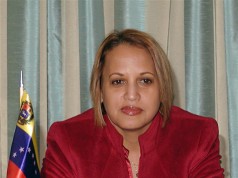Yet thousands — victims of
On Sunday, Haitian Prime Minister
collected and buried 70,000 bodies, all but 5,000 from the capital
city,
At first, they tried to identify the dead. Now
they’re merely counting them. They keep a running tally on sheets of
paper as they scoop the corpses with loaders and deposit them in dump
trucks, said
Reluctant to give a final figure, the government
thinks the toll could rise to 100,000; authorities have yet to make
their way to areas within the capital and outside that suffered mass
casualties.
“Until we get to the slums, the dense population, we won’t know” the number exactly, Bellerive said.
Right after Tuesday’s earthquake, those who could
afford to bought pretty caskets, draped them with flowers and drove
their dead to a crematory or family plots.
Those who couldn’t afford to burned the bodies themselves.
Initially, the dead were wrapped tightly in pink and
white sheets stripped from beds or salvaged from the rubble, and
gingerly placed on sidewalks.
Now, relatives who might have spent days digging for their dead are letting workers haul them away.
The unceremonious disposals are generating
criticism, but Bellerive defended them, saying that “people don’t
realize that we didn’t know we had to collect 70,000 bodies in five
days … . I believe no country would be prepared for that.”
Celestin said his truck drivers initially took
cameras and notebooks on their routes to help save the identities of
the dead. But 1,000 bodies later, the system broke down because
bystanders dumped corpses into the loaders.
The total “is way more than” 70,000, Celestin said.
Sixty government dump trucks and loaders with eight-man teams do the work, Celestin said.
“It’s a long process. Step one, is they put the body into the loader. The loader then puts the body into the truck.”
Celestin said his men are not professionals, just road builders doing their best.
Then the situation became even more urgent because
“the bodies were beginning to decompose, to smell. We were facing a
choice: leave them in the streets to rot where you would never be able
to identify them, or leave them and risk making people sick. When you
are in the midst of a disaster, saving the other people is the most
important decision.”
Jason said there are more than 150 “spontaneous”
camps in his city alone. That doesn’t take in those that have formed in
Petionville, or other communities outside of the city of
“The earthquake demolished a lot of tombs. So what
we did is we broke into them to create mass graves,” he said. “It’s not
that we decided to break into them. It was the simplest solution for us
to quickly remove the bodies from the streets.”
Still, he said, “people are upset … because people
have been bringing bodies from the slums and placing them on the side
of streets.”
Even finding a place to bury the bodies has not been
easy. After burying 5,000 bodies at a landfill outside of the city in
Titayen, the population living nearby protested and Celestin had to
find another location. Making matters worse, two dump trucks stacked
with bodies were on standby.
Eventually, the locals identified another location
where a new mass grave could be dug. Now there is a new problem: After
Celestin’s employees cut out a temporary road to the site, residents
are now dumping bodies along the dirt road, not even bothering to put
them into the ground.
Dr.
one of several agencies trying to identify the dead, said that many
bodies will never be identified, in some cases because no one is there
to identify them.
Some, he said, have been buried in temporary trenches “in bags with some type of identification and physical characteristics.”
They can be exhumed later. But those bulldozed into mass graves will remain where they are, anonymously.
More body bags “would be a good thing,” he said. “We
don’t know how many will be found in small cities. We’ve only been able
to cover 60 percent of the affected area,”
a global aid agency, said that “the best-case scenario is that we get a
digital photo or DNA for later identification,” which helped after the
“But in
On Sunday, residents poured gasoline and set a match
to a body that relatives couldn’t pull from a collapsed home. Neighbor
Danilio Jean, 33, defended the burning for health reasons.
He managed to get the body of his wife and kids, saying “friends helped and I buried them as I could.”
—
(c) 2010, The Miami Herald.
Visit
Distributed by McClatchy-Tribune Information Services.













